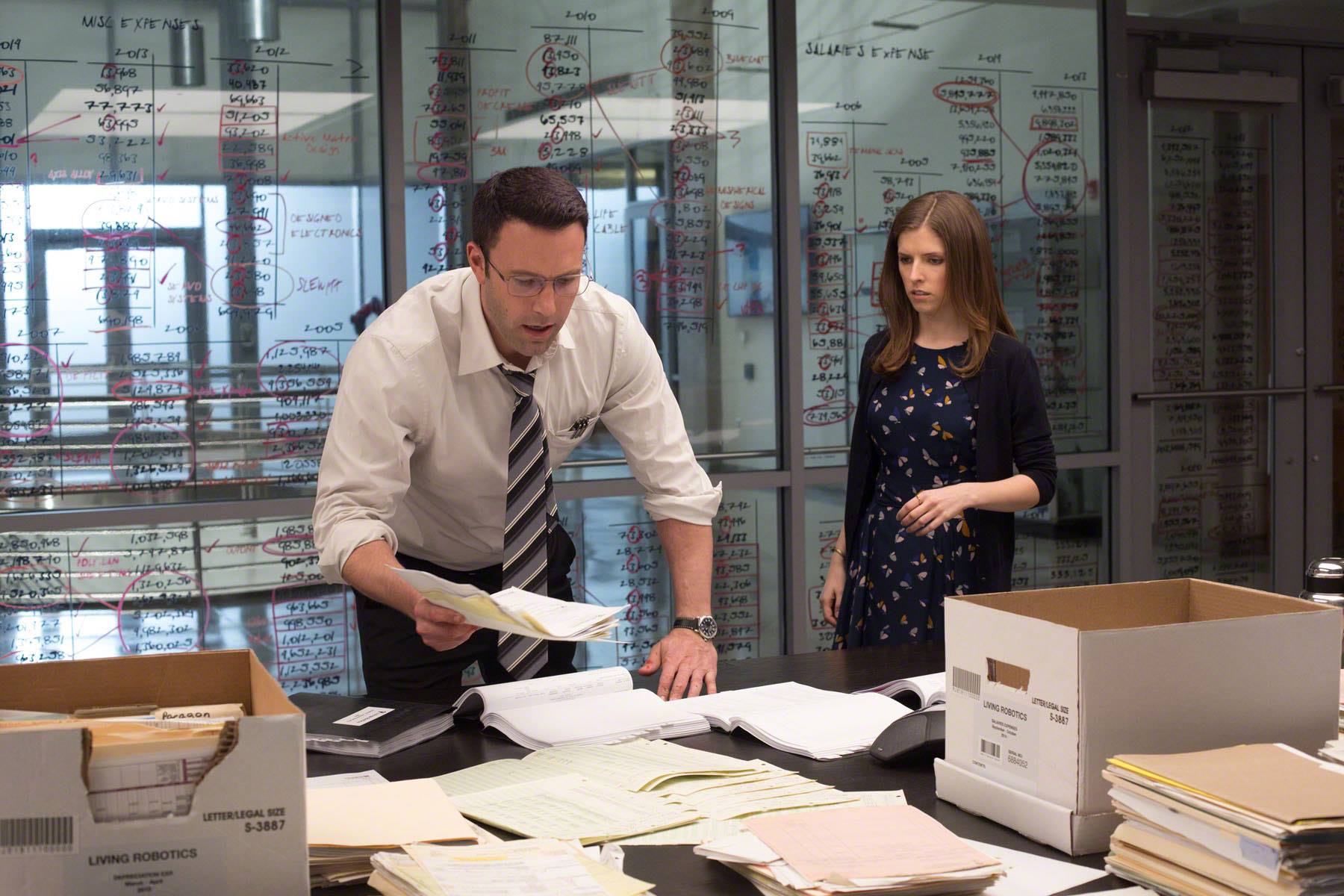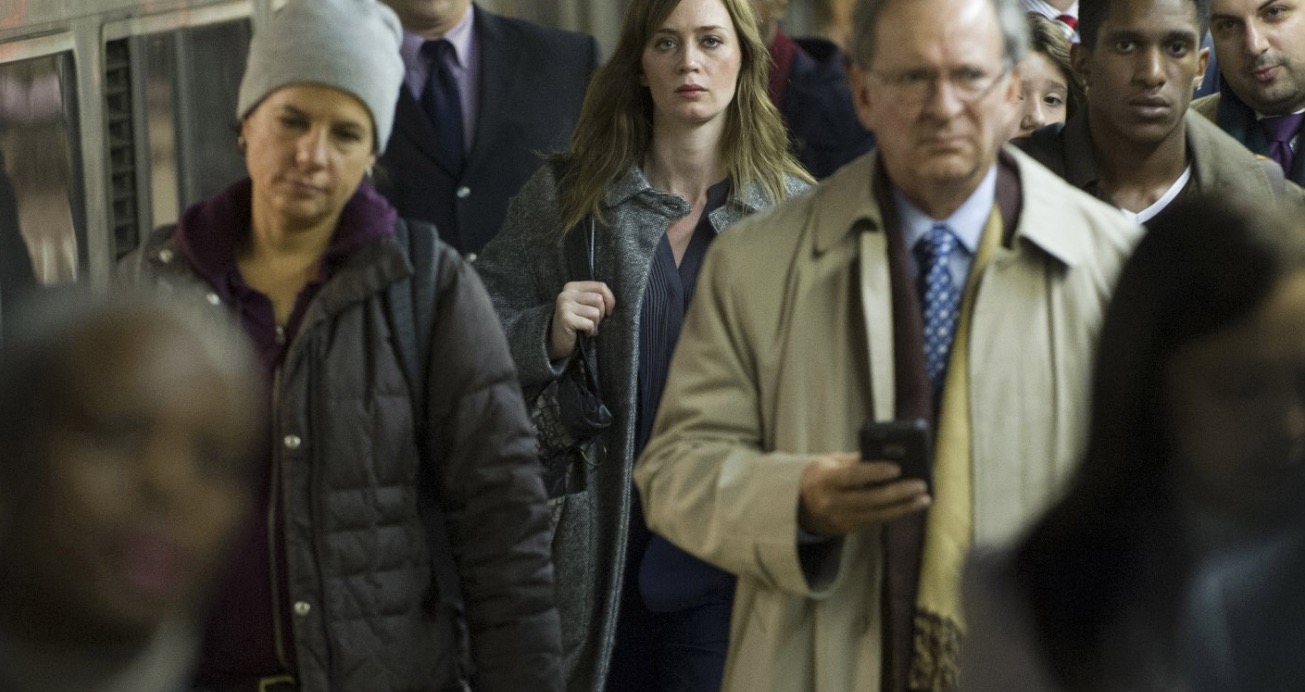
Courtesy
There is a season for every kind of movie. Spring is for comedies, summer is blockbuster territory, and the end of the year is Oscar real estate.
As for the fall, it’s usually good for at least one thriller to keep us on the edge of our seat, something along the line of Fatal Attraction, Seven, or last year’s Gone Girl.
New In Local Theaters
- Kevin Hart: What Now (R) 1 hr., 36 min.
(AMC Fiesta Square, Malco Razorback, Malco Rogers Towne)
» Watch trailer - Max Steel (PG-13) 1 hr., 33 min.
(Malco Razorback, Malco Rogers Towne)
» Watch trailer - Priceless 1 hr., 38 min.
(Malco Razorback, Malco Rogers Towne)
» Watch trailer - The Accountant (R) 2 hr., 8 min.
(Malco Razorback, Malco Pinnacle)
» Watch trailer
Unfortunately that might not be the case this autumn. Oh, two thrillers have recently opened, but neither The Accountant nor The Girl on the Train pack the suspense promised by their well-made trailers.
The Accountant took me by surprise, but not necessarily in a good way. The marketing for the film had me anticipating a blend of action and suspense with Ben Affleck starring as a gifted mob fixer, but what director Gavin O’Connor delivers is closer to a Netflix super-hero drama.
In fact the character Affleck plays, Christian Wolff is one part Batman, one part Punisher with a dash of Rain Man thrown in on the side. While certainly derivative, that’s not an altogether bad mixture for an adventure character.
However, considering Affleck is the latest big-screen Batman, Jon Bernthal, a key antagonist to Affleck’s character, is Netflix’s Punisher; and J.K. Simmons, who plays a Treasury Department agent, is set to play Commissioner Gordon in the forthcoming Justice League and Batman films, the unintentionally meta haze kept me from fully investing in the movie.
Others might not have that same mental hurdle to overcome, but what has been marketed as a serious film becomes a little too fantastic for its own good, and a twist at the end truly sends the movie over the top.
That being said Affleck, Bernthal, and Simmons as well as Anna Kendrick, John Lithgow, Jean Smart, Jeffrey Tambor, and Cynthia Addai-Robinson all give solid performances in the movie that is that’s too conventional for its own good, but not outright bad.
Affleck’s Wolff is a mathematics savant who uses a small-town accounting business as a front for his actual work as a highly paid forensic accountant for drug cartels and other organized criminals. While he is a crook himself, Wolff is not above meeting out his own form of justice when clients cross his personal moral boundaries. Kendrick plays a young accountant who comes under Wolff’s protection when she proves to be a little bit too good for her job. Simmons and Addai-Robinson are looking to take down the rouge accountant for his crimes, while Bernthal is a hitman seeking to off Wolff for the cash and the challenge.
On the whole, I probably liked the movie more than I should. Really its greatest offense is the bait-and-switch marketing campaign that suggests a crime thriller rather than a vigilante flick.
Director M. Night Shyamalan used the same trick much more effectively with his 2000 film Unbreakable. It’s just hard to be totally satisfied when you’re expecting a spicy dish and are served cotton candy.
As a thriller, I’d give the movie a C-, but as a cheesy vigilante/super-hero movie, I’d give it a B.
The Girl on the Train

Courtesy
The Girl on the Train is a mystery thriller, just as the marketing suggests, but the film based on the Paula Hawkins’ 2015 novel fails to be all that suspenseful.
Emily Blunt stars as Rachel, a drunk who remains obsessed with her ex-husband Tom (Justin Theroux), who is living in seemingly suburban bliss with his new wife Ana (Rebecca Ferguson) and newborn Evie. Of note, Tom cheated on Rachel with Ana, who was the real estate agent that sold Tom and Rachel the house in which he and his new family are living.
Rachel, who experiences drunken blackouts, has lost her job and spends much of her time stalking Tom, Ana, Evie, and their lovely nanny Megan (Haley Bennett), who lives two houses down. The commuter train Rachel rides passes by both of the homes, giving Rachel ample opportunity to spy as she rides the train back and forth.
After Megan goes missing, Detective Riley (Allison Janney) hones in on Rachel as a prime suspect because she was the last to have been seen with Megan near a tunnel in the neighborhood.
From there the film revolves around Rachel’s attempt to remember what exactly happened when she met with Megan near the tunnel. The film grows even more convoluted as Rachel draws more potential suspects for Megan’s murder into her drunken web.
No doubt director Tate Taylor sought to maintain the integrity of Hawkins’ novel in making the film, but in doing so, the movie became rather bland, uninteresting and overcrowded. The performances aren’t bad, but for whatever reason the story failed to captivate.
Rachel’s blackouts are a key to the mystery of Megan’s murder, but Taylor failed to find a way to inventively incorporate them into the storytelling. Seeds are planted for the denouement throughout the film, but instead of it inciting a feeling of “ah ha,” the resolution had me asking, “come on, man?”
Grade: C
Classic Corner
As we continue to make our way through the spookiest month of the year, it’s time to consider our fine furry and fanged friends, werewolves.
The Wolf Man
While the 1941 version of The Wolf Man wasn’t the first werewolf movie — that distinction belongs to 1935’s Werewolf of London — it is the most influential. Starring Lon Chaney Jr. as the cursed Larry Talbot, The Wolf Man established all the familiar lore we associate with the flea-bitten beasts thanks to screenwriter Curt Siodmak.
While Siodmak often told reporters he did intensive research on the condition of lycanthropy when writing the screenplay, it seems he conjured most of it up himself, while lifting the rest from Bram Stoker’s novel Dracula.
No matter where Siodmack got the ideas, he put them together in fairly effective fashion in his screenplay. The Wolf Man was a B film, but the story and the cast — which included Claude Raines, Ralph Bellamy, Patric Knowles, Bela Lugosi and Maria Ouspenskaya — was strong enough to make the movie memorable. However, it was the distinctive make-up by Universal Studios chief makeup artist Jack Pierce and Chaney’s forlorn performance that made the film a true classic. Pierce’s makeups for the Wolf Man, Frankenstein, the Mummy and other Universal monsters remain iconic all these years later.
Forty years after its debut, The Wolf Man inspired two of the better werewolf films ever made by two fine directors Jon Landis and Joe Dante.
The Howling
Dante’s The Howling made it to the theaters first in April of 1981, opening with a chilling scene of a television newswoman Karen White (Dee Wallace) used as bait to capture a serial killer in a porno theater.
Traumatized by the ordeal, White and her husband meet with therapist, who advises her to go on retreat to “The Colony,” a secluded countryside resort. Little do she and her husband know that werewolves are terrorizing the resort.
Today the werewolf transformations come off as a bit cheesy, but 40 years ago, they were quite thrilling. The film’s climax and ending are quite fun in a horrific type of way.
An American Werewolf in London
In August of 1981, Landis’ An American Werewolf in London debuted, and a horror classic was born.
Landis and special effects master Rick Baker, who won the first Academy Award for Outstanding Achievement in Makeup for the film, were big fans of The Wolf Man. They not only paid homage with the original, but they also took the concept so much further.
Baker’s transformation scene is brutal and graphic and set the standard for onscreen metamorphosis prior to the development of computer-generated effects. Many horror fans would argue Baker’s animatronic and practical transformation effects in the film are still superior to CGI.
The gory film has several genuine scares including the scene wither David (David Naughton) and Jack (Griffin Dunne) are viciously mauled on the foggy mores by the werewolf, a chilling scene where the werewolf stalks a subway passenger.
David survives the attack and becomes cursed. Jack dies, but returns as a decaying ghoul, haunting David to take his life before he turns into a wolf and commits murder.
Landis, who also directed National Lampoon’s Animal House, The Blues Brothers, Trading Places, and Michael Jackson’s Thriller music video, masterfully blended humor and horror together for an outstanding movie. He effectively used such lunar-themed tunes as Bobby Vinton’s Blue Moon, Creedence Clearwater Revival’s Bad Moon Rising, and Van Morrison’s Moondance to enhance the mood of the film.
All three of these films are fun, but An American Werewolf in London is the pride of the pack.
https://www.youtube.com/watch?v=3uw6QPThCqE

